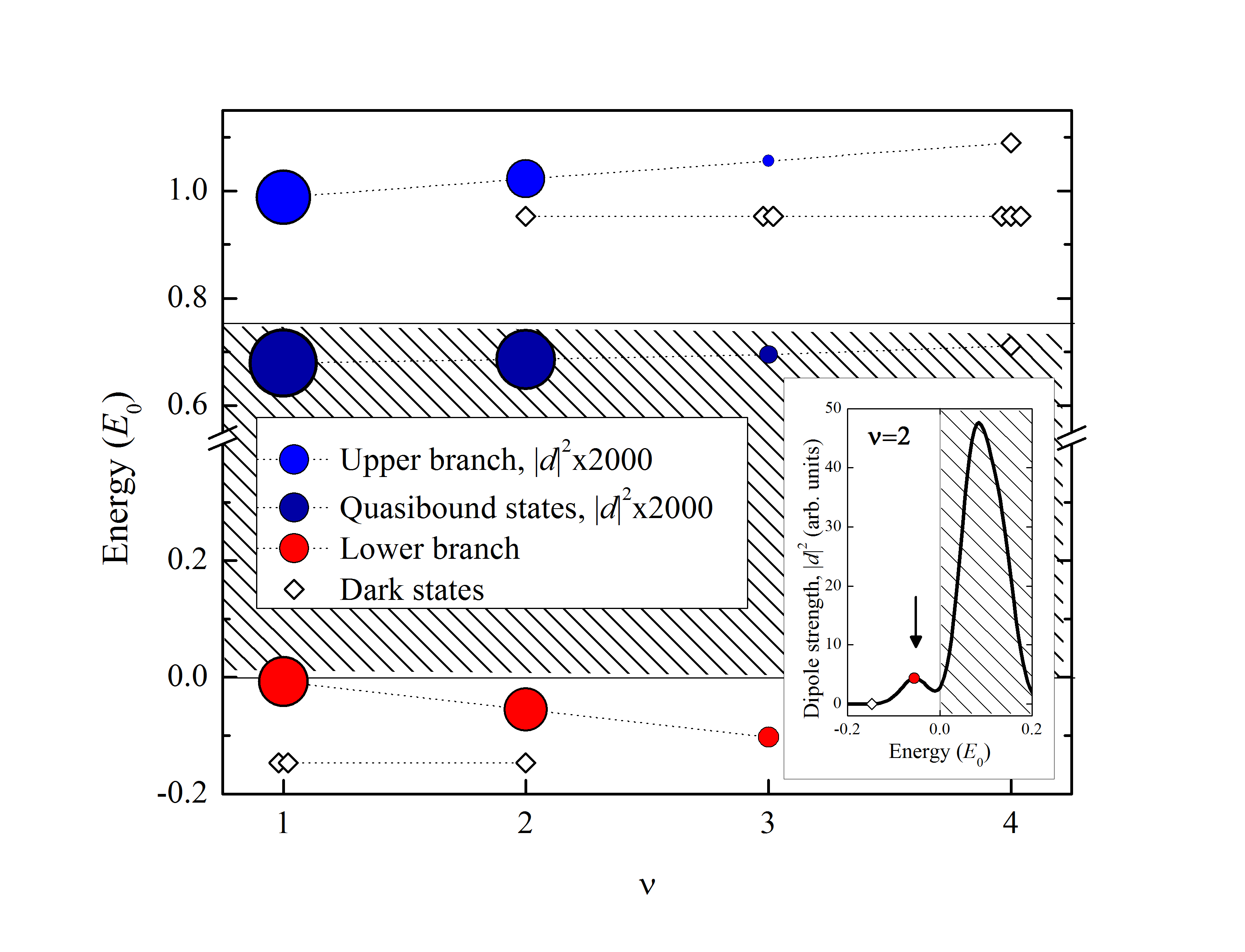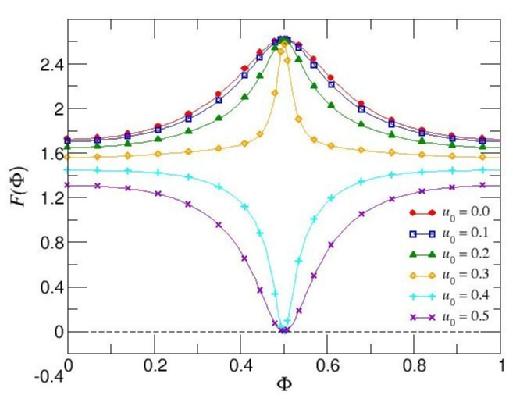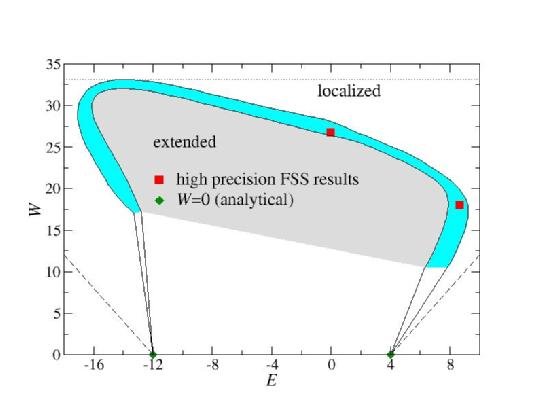My Research
Collective excitations in dirty graphene (May 2008 – present)
Collaborators: Alexander B. Dzyubenko and Rudolf A. Roemer
and Rudolf A. Roemer
As the building block for many other carbon-based structures, graphene is a material of fundamental importance. It can be thought of as a single layer of graphite or more precisely as a two-dimensional array of carbon atoms forming a honeycomb lattice. It is in fact produced whenever we use a pencil, but was thought not to exist in its free form until it was first isolated in 2004. Since its discovery, it has been the focus of extensive experimental and theoretical study. Its unusual properties, which include ultrahigh electron mobility, make it a promising candidate for use in technological applications such as a high sensitivity gas detectors and field-effect transistors. An important theoretical aspect is that due to its honeycomb lattice structure, electrons in graphene behave quasi-relativistically, obeying the Dirac equation instead of the usual non-relativistic Schrödinger equation. Such relativistic quantum behaviour makes graphene a unique material in condensed matter theory and a fascinating system to study.
We are currently considering a single sheet of graphene with a Coulomb impurity in the presence of a magnetic field, which is perpendicular to the plane of the sheet. We use a secondary quantised approach similar to that which was used for the 2D electron gas. However, there are some significant differences. Kohn’s theorem states that for a 2D electron gas in the presence of a perpendicular magnetic field, the cyclotron resonance is independent of the strength of the electron-electron interactions. However, in graphene the relativistic nature of the electrons means that Kohn’s theorem does not hold. Thus electron-electron interactions must be very carefully treated and the absorption of a photon results in a collective excitation of the material. Another complication is that the Dirac equation has negative energy solutions and there is no clear lower bound for the electron energies. There is also a zero energy solution and thus no gap (in the approximation that Zeemann and valley splitting is ignored) between positive and negative energy states meaning that one must consider interactions between electrons with positive and negative energies. Our aim is to locate the bound excitonic states and to see how their position varies with respect to the cyclotron resonance when the filling factor and light polarisation is changed. We anticipate making some predictions that are experimentally verifiable.
In press (Phys. Rev. B) PDF
Exciton storage in an Aharonov-Bohm nanoring with electric field tuning (begun summer 2006, completed January-September 2008)
Collaborators: Rudolf A. Roemer, Vivaldo L. Campo Jr. and Mikhail E. Portnoi
Recent breakthroughs in the ability to manipulate excitons and light provide hope for significant technological advances. The speed of light has been slowed down to 17ms−1 in an ultracold gas of sodium atoms and Bose-Einstein condensation of excitonic gases has been achieved. One area where such progress could be applied is that of optical computing, where photons are used to process and transmit data. We propose a simple mechanism for controlling excitonic lifetimes in an Aharonov-Bohm nanoring system with an additional in-plane electric field, with a view to applying the work to the problem of excitonic data storage. The wavefunction of a charged particle confined to a non simply-connected geometry gains a phase factor upon completing a closed loop in a region threaded by a magnetic flux. This is the Aharonov-Bohm effect and was originally discovered in 1948 by Ehrenberg and Siday and then brought to the attention of the mesoscopics community by Aharonov and Bohm in 1959. Such an effect has its manifestation in oscillations in the physical properties of the particle as the flux is varied. Aharonov-Bohm oscillations have also been predicted theoretically for excitons, neutral particles comprising of a bound electron-hole pair.
We consider an exciton on a nanoring in the presence of a perpendicular magnetic field and a lateral electric field. The single particle wavefunctions and energies are obtained using a Fourier Ansatz and then used as a basis for the excitonic wavefunction. For the case of a short-ranged potential, we find a self-consistent solution to the problem and confirm the presence of oscillations in the excitonic energy and oscillator strength as a function of magnetic flux, with period equal to the universal flux quantum. Of particular interest is how the oscillator strength behaves as a function of electric field strength. Up to a critical value of electric field strength, the oscillator strength peaks at half a flux quantum indicating optimal conditions for exciton creation or recombination. However, beyond this critical value it reaches zero at half a flux quantum and such transitions are forbidden. This suggests a simple method for creating and trapping excitons, by tuning the electric and magnetic fields.
Phys. Rev. Lett. 102, 096405 (2009) PDF
Critical parameters for the Anderson transition in BCC and FCC lattices (July 2007-January 2008)
Collaborators: Rudolf A. Roemer and Andrzej Eilmes
Crystalline solids are popular systems to study due to their long-range structural order. However, in reality such systems are never perfectly ordered; they contain defects in the form of impurities and dislocated or missing ions. Such disorder can be introduced through a random lattice potential and has a big impact on electronic transport. If the disorder is increased enough, a transition between metallic and insulating states will result. This is known as the Anderson transition after the scientist who first proved its existence in 1958. It is a purely quantum mechanical phenomenon caused by the scattering and interference of the electronic wave. A lot of work has gone into calculating the critical parameters for this quantum phase transition using predominantly numerical techniques. Such information is particularly desirable, as it indicates which universality class the system is a member of and thus more may be learned about it by studying other systems in the class.
Prior to this work, studies have focused on the simple cubic (SC) lattice. However, it is the more complicated body-centred cubic (BCC) and face-centred cubic (FCC) lattices, which are prevalent in nature. We study the Anderson transition in such lattices in the case of isotropic nearest-neighbour hopping and an onsite potential with uniformly distributed disorder. The localisation length of the electronic wavefunction is calculated from Lyapunov exponents obtained using a transfer-matrix method for different energies, disorder values and system sizes. This data is analysed using finite-size scaling and the critical parameters are determined. A critical exponent of approximately 1.5-1.6 is found for both lattice types for transitions occurring either at fixed energy or at fixed disorder. This agrees with results previously obtained for the SC lattice, confirming that these systems belong to the same orthogonal universality class. The critical disorder is not universal and increases as the number of nearest neighbours in the lattice is increased, which agrees with intuition. We also create an energy-disorder phase diagram for both lattice types. This is symmetric about the band centre for the BCC lattice, due to its bipartite nature, but not for the FCC lattice.

Bound and quasibound states on a donor impurity irradiated by circularly polarized light.


